How to Prove the Value of your Content | Webinar Recap

In the world of endless digital noise we live in, proving the true value of your content is more important than ever. Whether you’re creating a blog, an ebook, an article, or a video, you need to have the right data in place in order to make informed decisions on your content strategy and ensure continued investment in your content program.
Last week, Clare Carr, VP of Marketing at Chief and John Levitt, Parse.ly’s GM caught up on a webinar to address the challenge of proving the value of your content. Whether you’re a media professional or a B2B/B2C marketer, a seasoned pro with a full grasp on your content analytics or a novice content strategist looking for a place to start, this recap blog post will be a great resource for you and your team.
Keep in mind that while there are differences in the goals media companies and B2B/B2C companies have with their content, the overlap and some of the ways that digital distribution comes into play are strong between markets. It’s important to learn from other markets and industries and think critically about how you can translate strategies.
Table of Contents
- Defining content
- Purpose of content
- Importance of content strategy
- Content strategy challenges
- ROI attribution through content conversions
- Proving content value in context
- Running with what’s working
- Different types of content value
Defining Content
Before we get into proving the value of your content, let’s make sure we’re on the same page about what we mean by the term ‘content’. In our experience, it can mean so many things to so many people, but when we say it we’re usually referring to owned and operated articles, blogs, newsletters, help docs, white papers, and videos. It’s also important to understand whether content is part of your business’s marketing or whether it is your business product. With publishers, content is often the product while for other companies it’s more part of the marketing.
With many companies nowadays, there is a considerable amount of intersection where content is the product and the marketing at the same time. Look at the NBA, for example. They produce news content and sell ads as a media company would, but their digital product also acts as marketing for the league in general with the goal of driving views on TV. Radio stations and museums are other good examples of this type of intersection.
As a result of the pandemic we’ve seen a strong transition in this direction from many of our clients, like the Metropolitan Museum of Art. Traditionally you go to a museum in person and the website is there for logistical information, but this year they’ve really focused on making their website the destination with the goal of monetizing through ticket sales and premium experiences.
Purpose of content
As we’ve discussed in previous webinars, content plays a crucial role throughout your audience’s journey and experience with your company, and the funnel below shows where different content programs come into play. The shape or wordage might vary depending on your business or market, but as Clare put it, “this is one of the most applicable graphics in the world and every marketer should be aware of it.”
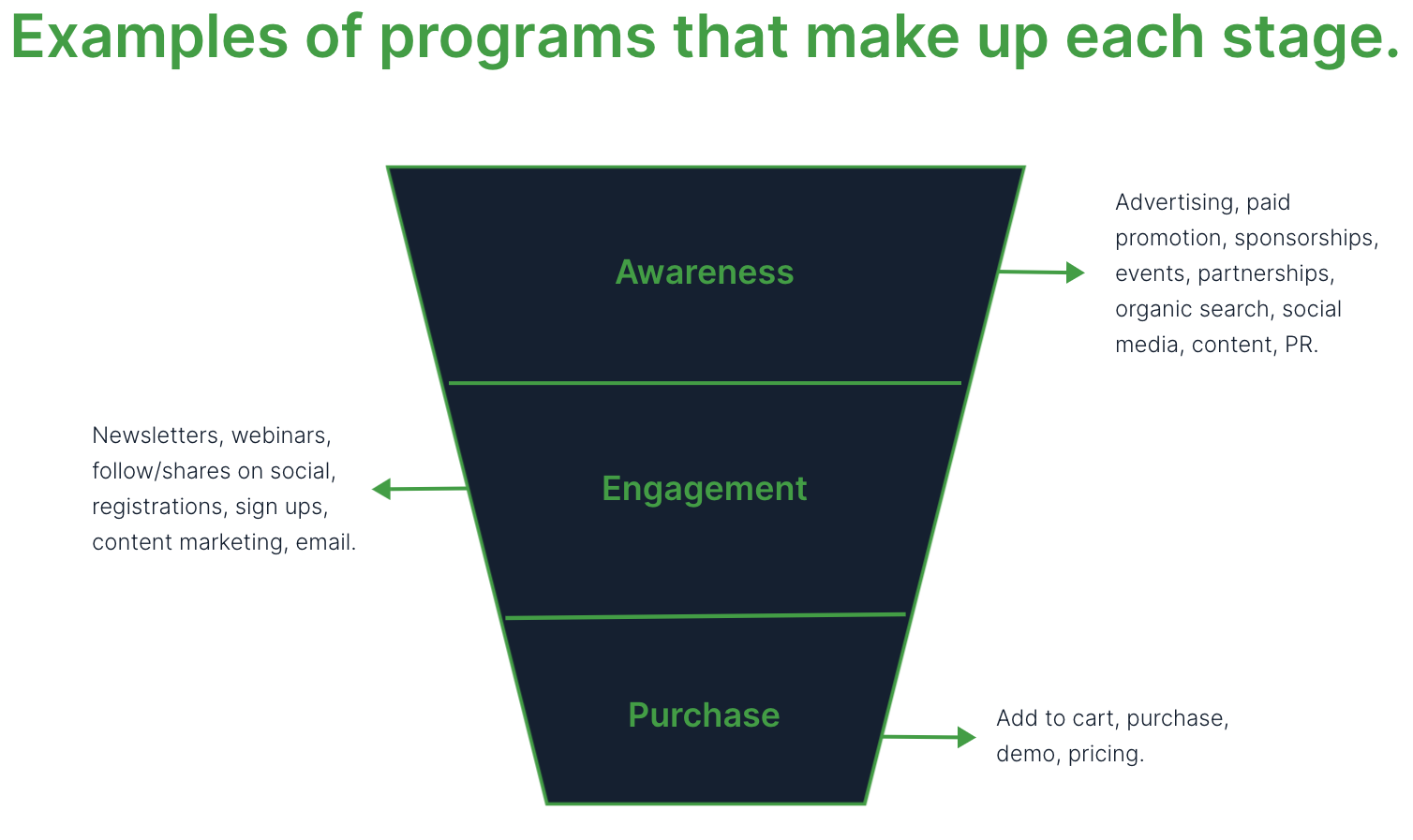
Efforts like paid ads, events, social media, and PR serve the purpose of creating general brand awareness for your company. They’ll help you increase your reach and grow a following. Newsletters, webinars, and more in-depth content marketing help to engage your audience and build trust and a more meaningful relationship. Finally, product demos and pricing pages help you seal the deal and drive your audience to take that final action of making a purchase.
Importance of content strategy
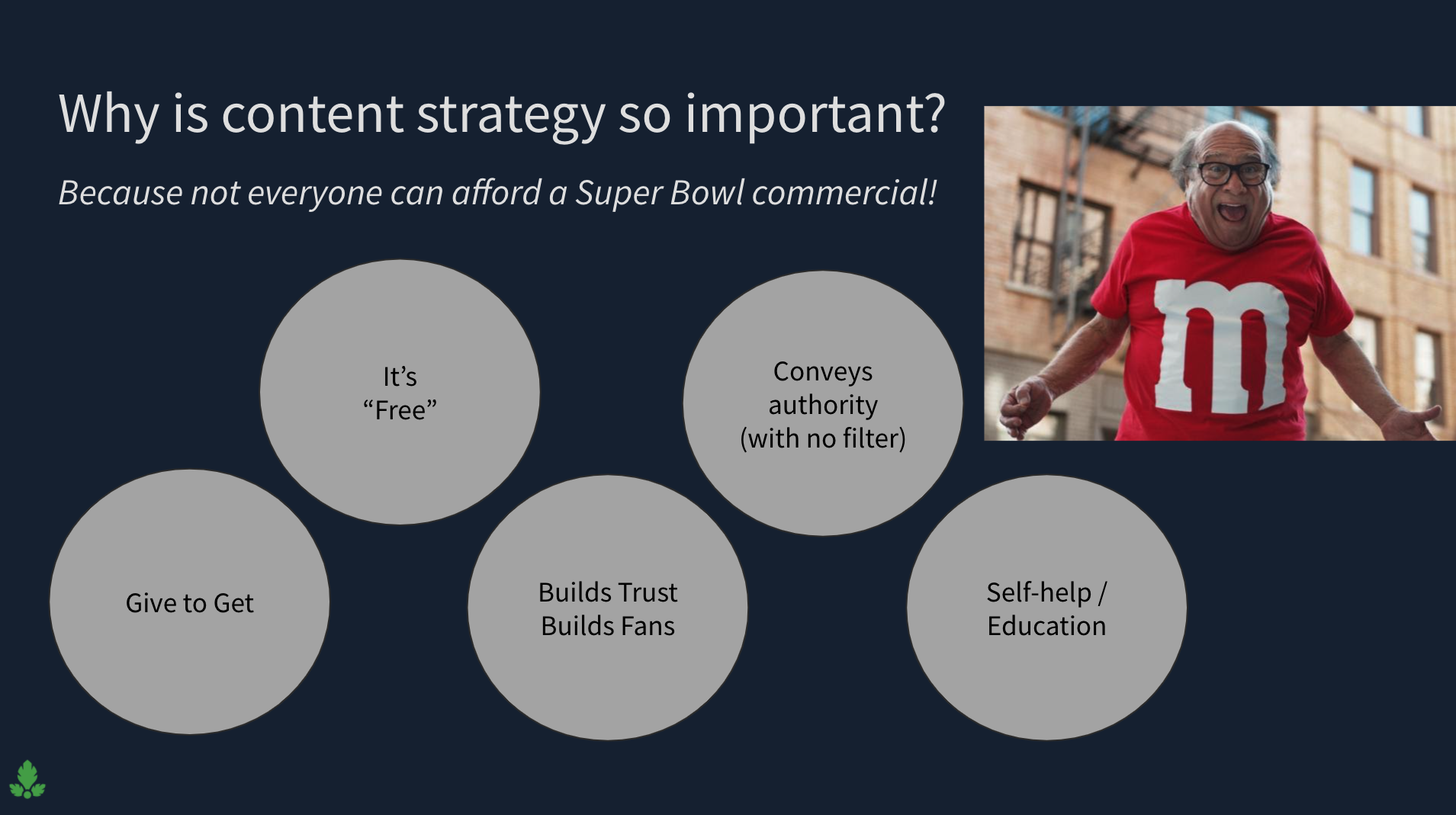
We can’t all afford a $5M super bowl commercial, especially in this economy…so we have to find more efficient and broader ways to get our messaging out and have the influence in the real world we’re looking for. That’s where having solid content and a deliberate content strategy is critical. You can still invest in paid ads as a leveraging effort to amplify acquisition, but if that’s what you’re relying on solely you lose control and forfeit a significant relationship with your audience.
When we own the content program we can own our company voice and have a view into our audience’s interaction and feedback. It’s not all about customer acquisition anyway. Audience’s these days are looking for real value and genuine help from the companies they work with. The most successful content programs always start with the baseline questions ‘why is this important to our audience?’ and ‘what does our audience care about?’ and work backwards from there.
With the speed and volume at which people consume content these days, whether it’s for work, education, or something else, it’s no longer enough for publishers and marketers to rely on single big moments or breaking news in order to connect with their audience. You need to find ways to constantly be a part of their lives, and without content and a purposeful content strategy, you can’t do that.
Content strategy challenges
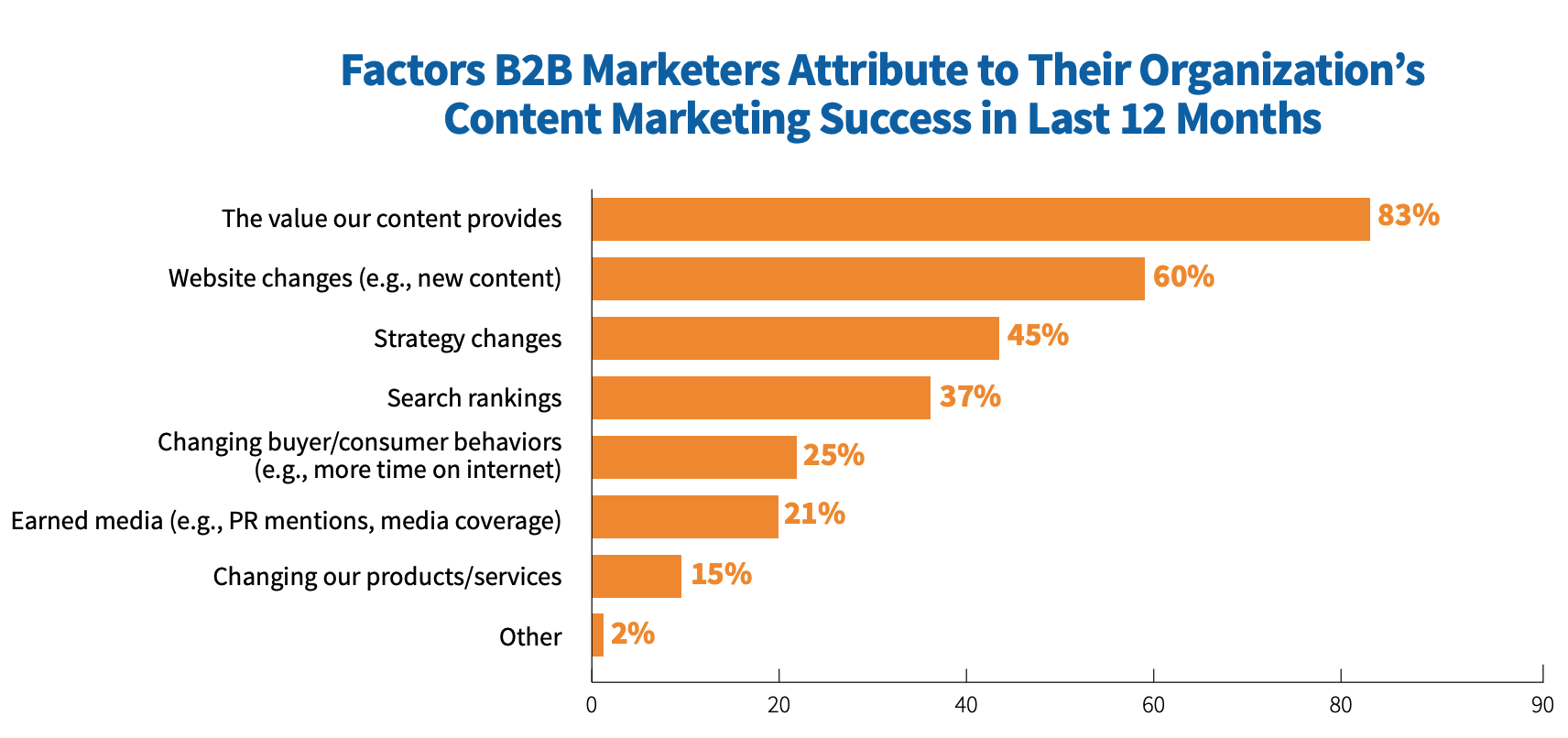
Looking at the Content Marketing Institute’s insights report for 2021, you can see that many B2B content marketing programs did not succeed this past year due to challenges in content measurement. By the same token, CMI also reported that the companies with the most successful marketing programs were the ones who used metrics to measure content performance.
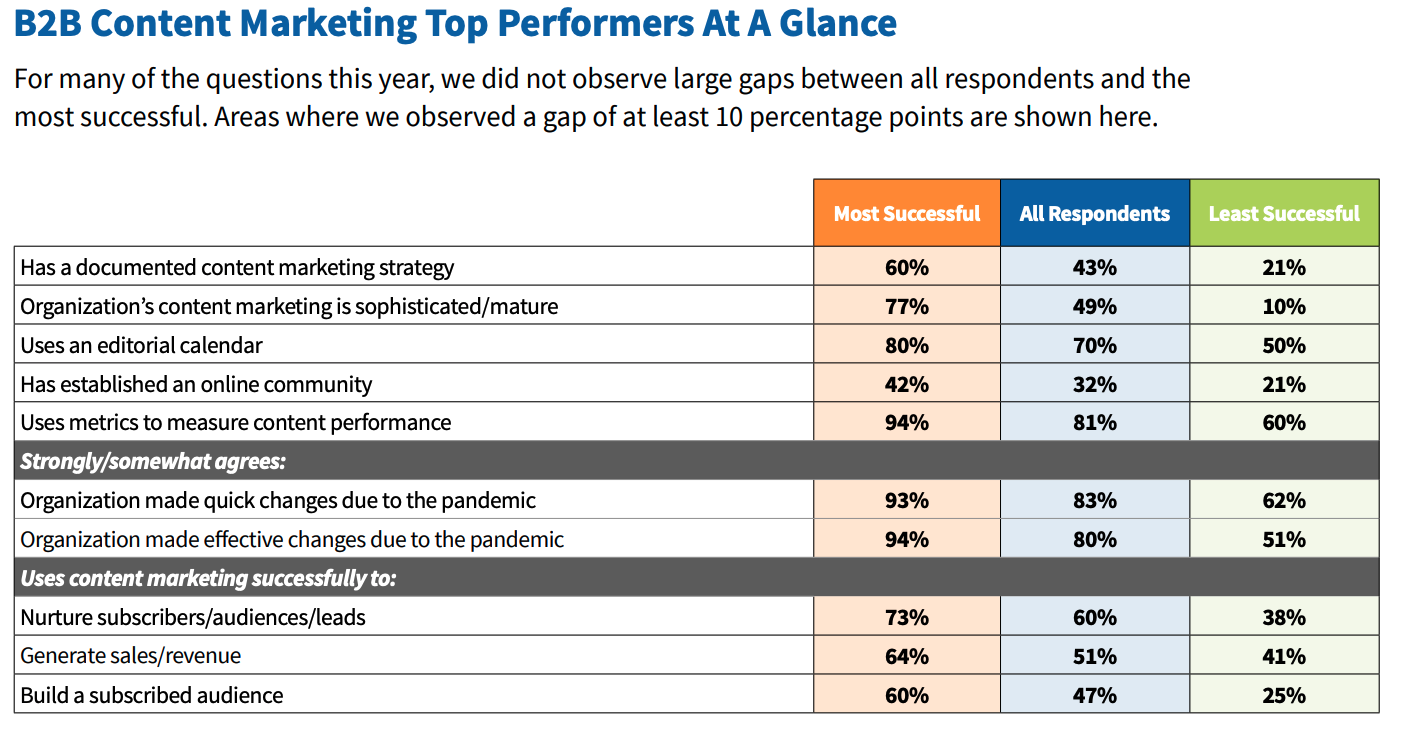
This can mean a couple of things: either the least successful companies don’t know what works and aren’t investing in the right strategies or their content is actually helping them a lot but they don’t have the metrics to prove it. The important point to consider when tackling this challenge is: how do we start influencing our success as opposed to just observing it?
Quality content is a long-term investment and helps de-risk success, but only if you have the right visibility in place to understand how it’s contributing to your bottom line. That’s where having a modern content analytics solution like Parse.ly in place is crucial as it’s designed specifically for content professionals to help them track just how much they’re influencing their company’s success.
Content analytics are especially helpful when tackling the question of ROI attribution, which was a major challenge for B2B companies seeking outsourced content marketing help last year.
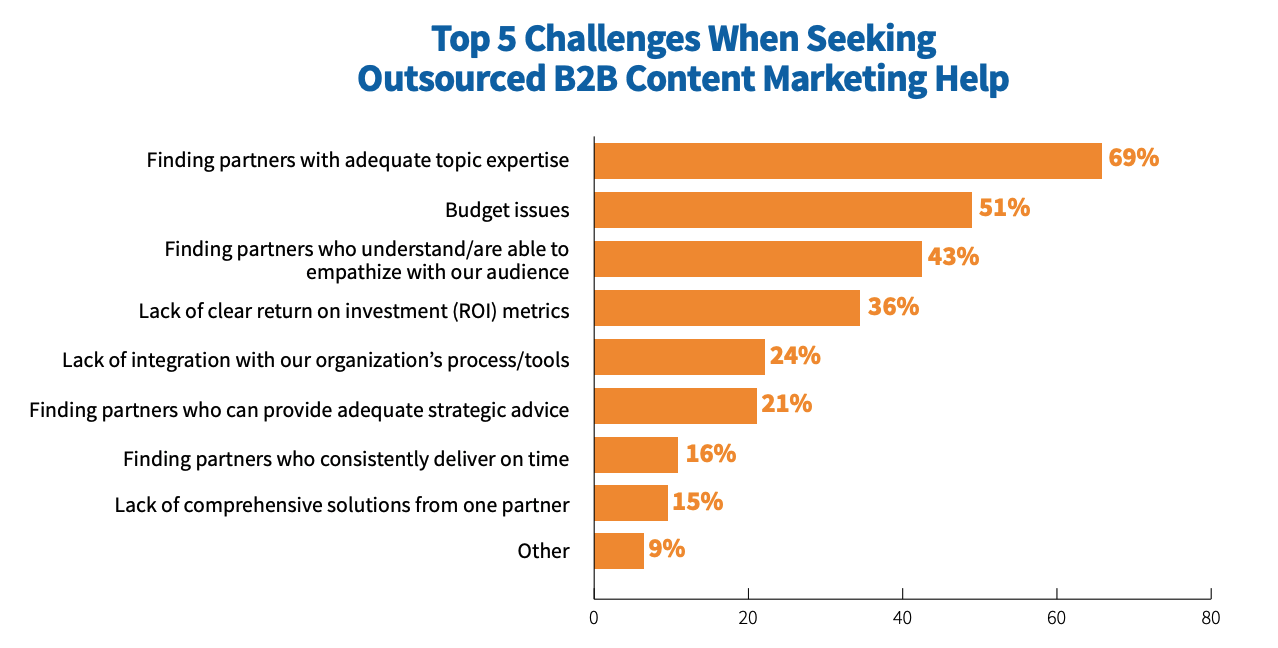
ROI attribution through content conversions
This is where the content conversions metric is key. It’s how you understand what content is leading your audience to take a valuable, intended action that’s tied directly to revenue. Once you know what content is most valuable in terms of ROI, then you can double-down on what’s working.
One of Parse.ly’s clients, take The Atlantic for example, might have a journalist who spends months writing a story only to see that it doesn’t end up hitting the overall readership goals they had set. At first glance, the team might label this as a failure and move on, but it very well could be the case that this story brought in a small but valuable audience that converted to paid subscribers at a much higher rate than other stories.
Without the ability to dig a bit deeper and look at content conversions, The Atlantic would be missing valuable revenue opportunities and key indicators which would lead them to invest in the wrong places. Being able to show this type of ROI attribution might even be exactly what they need to finish the argument to hire a few new people for next year. The trick is not just knowing how you did, but doing the work to know where you should be investing next.
This is especially important right now during the pandemic with new content programs emerging and budgets being cut. The stakes are even higher for knowing the value of your content and being able to communicate that information.
Proving content value in context
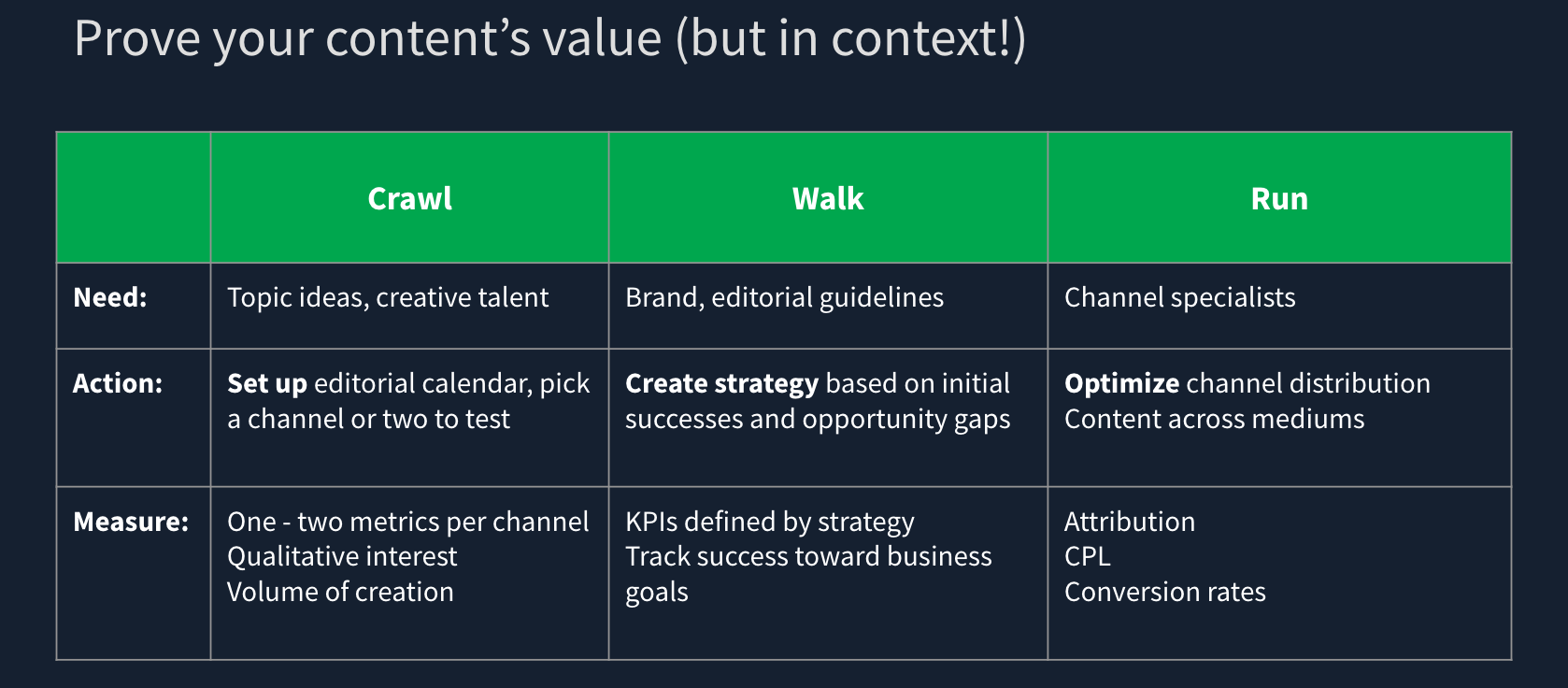
Before you start investing in new strategies and initiatives, make sure you identify where your content program is in maturity. Then you can use this graphic to get a sense of where to direct your efforts.
Think about the size and maturity of your content program, and go through the appropriate column to figure out what you need to measure. Try to think about how you’re tracking where you are in this process. For a smaller, newer program, knowing, for instance, that some audiences are small but valuable might not be applicable. For a larger, more mature program, the topic ideas and creative talent should already be in place and you should be looking to optimize and tweak your strategy for different channels. Make sure to give yourself the reward of knowing what’s working and what’s not so you don’t get ahead of yourself.
Running with what’s working
Not all programs are at the same place and not all strategies will work for everyone, but there are some building blocks that anyone can follow. A basic strategy companies in any vertical and at any stage of maturity can use is COPE – create once, publish everywhere. If you find you have something that’s working well, pour gasoline on it. Don’t shy away from reusing or repurposing content that has proven to be valuable.
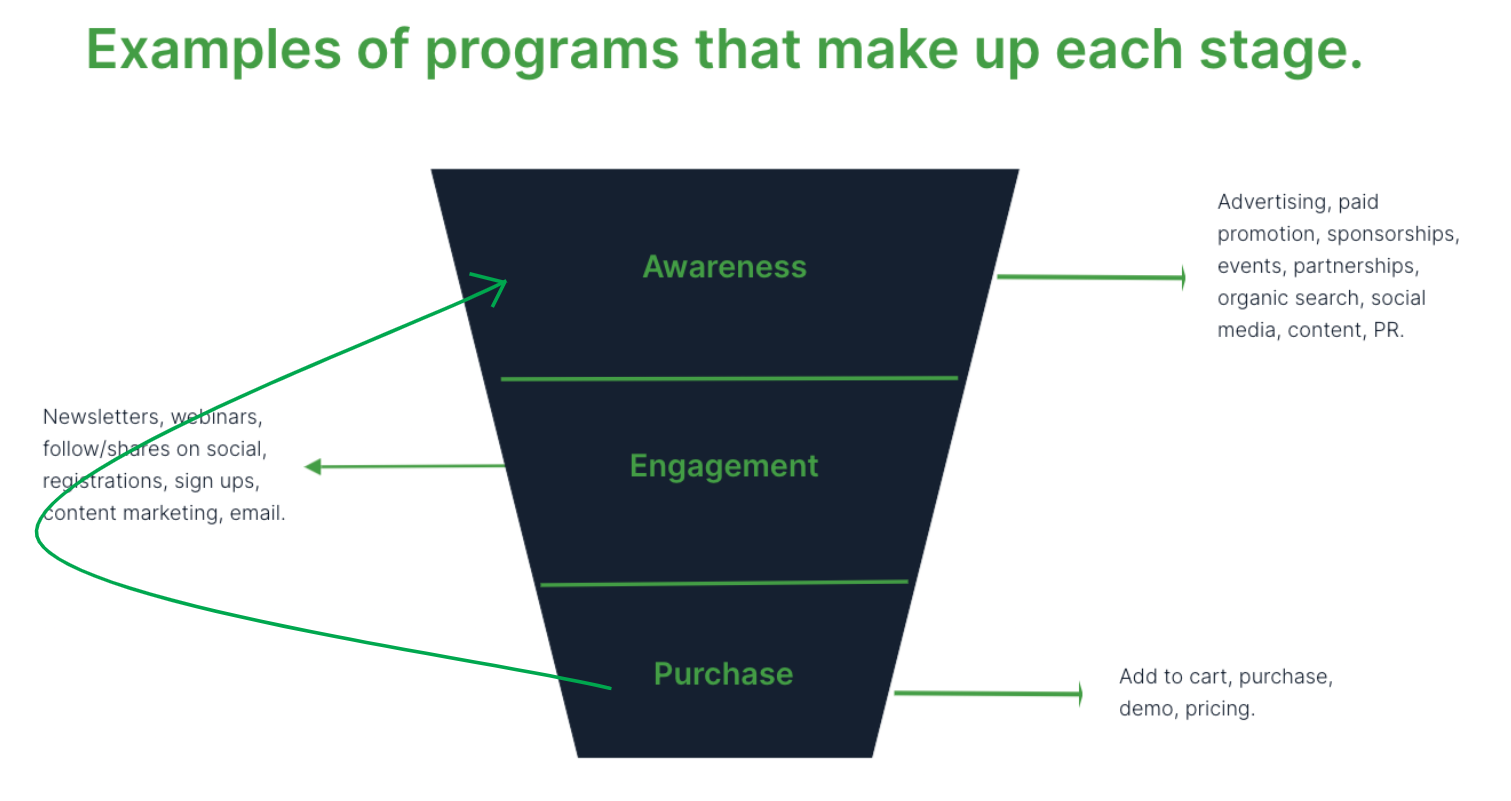
Look at the New York Times ‘The Daily’. It’s a great example of a team making the most of the existing work they’re doing and putting a different spin on what their audience is enjoying. Remember that when you’re the person creating the content it’s easy to get lost in thinking that you always need something new and fresh. You may feel that you’ve said it a million times, but your audience may have only heard it once. If you’re seeing good results, don’t reinvent the wheel and waste money making new material if old material is working.
For more mature and established content programs, you can also start thinking critically about which stage in this funnel you’re trying to create content for. You need to break up this matrix into digestible, achievable goals that will get you where you want to be in 2021. Think about what levers you can pull for results and pick a focus area. For example, you can widen the funnel by creating more content to hit newsletter subscriber goals or focus on customer lifetime retention by creating content that makes people who are already part of your world feel more valuable and smarter by working with you.
Different types of content value
Remember also that there is a distinction between the business value and the audience value of your content. For example, publishers are constantly trying to balance between selling ads and fostering engagement. Focusing too much on one or the other could be bad news for your content program.
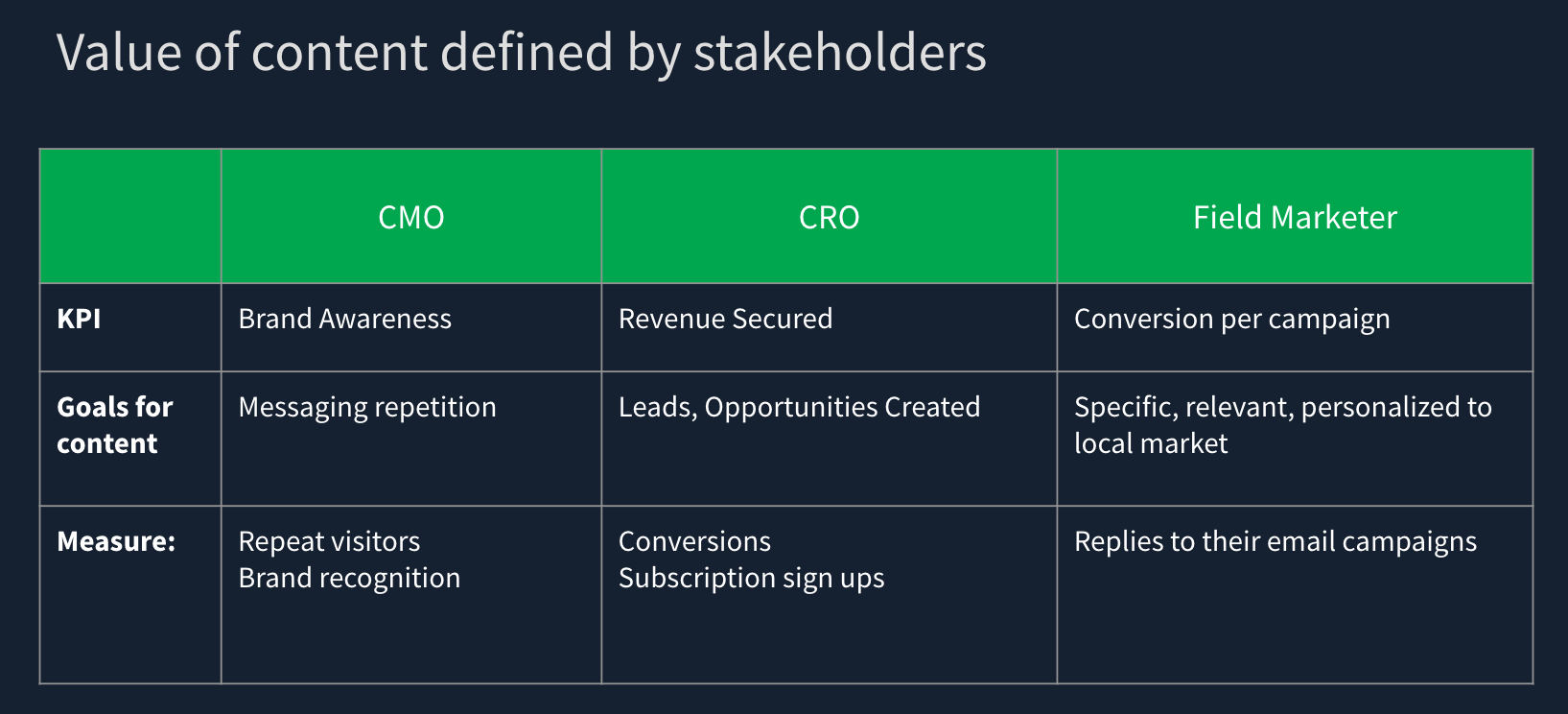
When looking at the business value of your content, you need to think not only about your audience, but about the people you work with and work for. This graphic highlights which goals and KPIs different people in your organization likely care about when thinking about content.
If you’re pitching an idea to your CMO, remember to think about how it will tie into overall brand awareness. If you’re trying to secure budget from your CRO for a new project, make sure you tie in ROI through content conversions. Make sure you have the right attribution model in place for whatever value you’re pitching as well, maybe through UTM parameters. Pull together the appropriate data in order to make your case and advocate for yourself internally.
And try to make the data fun and interactive. Presenting something visual, accessible, and exciting will be much more effective than just sending an excel spreadsheet to your boss. You do need to provide context, but the more you can focus on the bottom line that the data is supporting, the better.
When looking at the audience value of your content, remember that there is also the intangible value of making your readers feel included in your world by tapping into their emotions and helping them succeed in their day-to-day lives. For better or for worse, people are usually more responsive to feelings than to facts. We shouldn’t be manipulative about that, but we need to be honest about how this affects our work. Ultimately, people aren’t going to do anything if they don’t feel anything.
Start proving the value of your content and tapping into your audience’s emotions. The new year is sure to bring it’s share of changes and challenges, so make sure you have access to the data that can support you along the way. Chat with one of Parse.ly’s product specialists today about how we can help you get started.